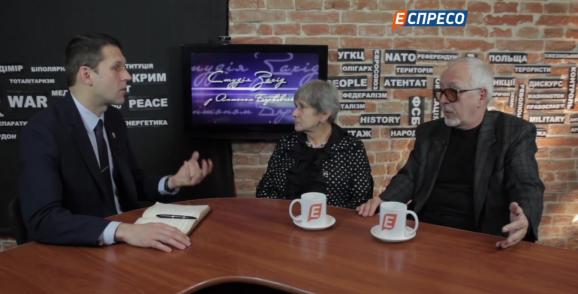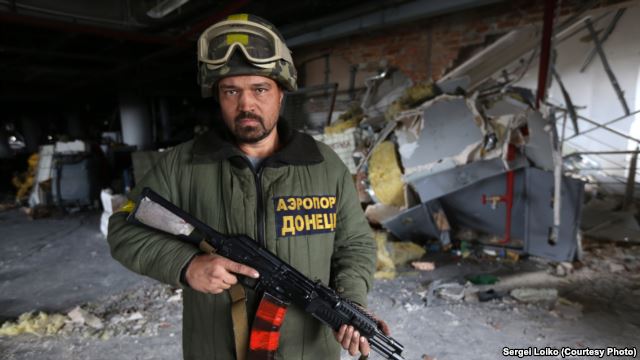When and why did you begin to work with Ukraine and do you remember how things were earlier?
It's very simple. I began to be involved in transferring companies from Denmark. Poland was the first destination assigned. This was during 1988-89, at a time that the Soviet Union was collapsing and the wall had already come down. We were doing this based on my knowledge and experience from the Soviet era. I knew what to expect and what the conditions were.
From Poland to Ukraine
Ukraine was added to our list as a result of the development of our companies in Poland and the Baltic countries, which were our goals from 1989 to 1994. By 1994, it was absolutely clear that the Baltic countries and Poland would end up in the EU sooner or later . There were political indications and there was no opposition on the part of the population; therefore, it was a natural process. Additionally, in Poland and the Baltic countries there were very low productions costs, which later began to rise, and therefore, we began to look for other avenues of development.
We studied the conditions in Russia, Belarus, Ukraine, Romania, and Bulgaria because at that time they were not on the list of potential EU countries. There were predictions that they would remain outside the EU borders for a very long period. We chose Ukraine for a very simple reason -- it was the most accessible country. There was no manufacturing in Russia. Raw materials had to be transported from Moscow to St. Petersburg or vice versa because there was no industry between them. Belarus at that time was unacceptable for Danish companies. Romania and Bulgaria had enormous problems with logistics, and this created problems with transportation.
So we chose Ukraine mostly because it was and remains an agrarian country and a supplier of raw materials. And this means that we expected gradual development. For example, manufacturers of agricultural products produce them only for the local residents for very low prices. You will not earn much on this. However, even at world prices, selling is difficult because there are many countries whose economies are based on raw materials with very low cost.
This was the motivation for us to bring business to Ukraine, especially in the western part. Lviv has an international airport. When you enter the city you have the impression you're in Krakow. We did not see any particular barriers. This was most significant for reform. Poland began to get closer to EU legislation in the legal field, in construction and employment. In 1996 Ukraine was completely Soviet.
Travels in Ukraine
What were your impressions of Ukraine when you first came to the country?
I visited Ukraine still during the Soviet times. I knew the country pretty well since the late 1970s. I had been in various corners of Ukraine earlier, but this time I came with a different purpose.
We began to work on the basis of a large EU project, which was technical assistance for restructuring large companies. A consulting firm was created. As part of this project, I had to travel throughout Ukraine to visit large companies. During the first year of work I spent time in all the large cities of the country.
No heat or electricity
How do you see long-term development in Ukraine?
Until 1996 most of the enterprises in Ukraine had been bankrupted. There was no heating or electricity. The situation was not very pretty. During visits to many large companies we sat at meetings in coats and warm boots and were happy when they served us a bit of vodka at lunch to warm up.
In the large factories in hundred-meter-long corridors there would be only one lamp. In short, the country was very backward. But the same year Ukraine gained its own currency and, it should be noted, that we did not see any people with sunken cheeks. All the people we saw in the streets had a pathetic look but they were not extremely thin, as was the case in Poland during 1988-89, for example. There you could see people with yellowish or completely gray skin and sunken cheeks because they were starving. But in Ukraine there were lots home gardens and dachas where people grew their own food.
These were travels that I will remember all my life. It was immediately obvious when you went through passport control after exiting the plane that there were "lords" here who kept tabs on people. People had to stand in line for health insurance and then in line for the baggage, and then in line to go through customs. Then there was the currency declaration, where all the pocket money was counted. Everything had to be declared. Absolutely everything. Computers, telephones, money, valuables. It was the same as a trip to the USSR or the USA.
The Danes were open
Which one of your projects in Ukraine has been most successful?
We helped several industry sectors and achieved success-- the textile industry and IT. We were able to move Ukraine in another direction.
Take the textile industry, for example. There are very many Ukrainian textile companies that are now competitive in Europe because they first collaborated with Danish companies. It is quite possible they were sub-contractors, but they have received new sewing machines and know-how. The Danes were open to sharing their experience. They were not like the Germans who said "this is ours." We saw many German companies in Ukraine that did not have the same kind of success or influence in the (industry) sectors. Equally important for us were the agrarian and the IT sectors.
Virtual engineering teams
Has the situation remained the same even now when Denmark brings new initiatives?
Now we are more concentrated in the IT sector and we need a large number of engineers in this field. We are forecasting that in a few years in Denmark there will be a shortage of 10,000 engineers at a high level -- doctors and others.
We cannot educate more. This is partly because of the limited capacity of the universities but also because we simply do not have enough talented students. It is very fortunate that the system of recruiting Ukrainian engineers is working in the IT sector.
Later we plan to create virtual IT teams, some of which will remain in Ukraine and collaborate with IT specialists in Denmark.
There is no demand for Ukrainian goods in the EU
Previously it was outsourcing, but now it's probably different?
Yes, but we can see that outsourcing has benefitted Ukraine. In the IT field in 2000, there was no revenue from IT, and in 2014 the revenue was already $4 billion. And this is only for employee time. This is not for products that are sold. It is possible to create revenue without using resources by using only the human resources and knowledge that Ukraine has. And this was done without any other additional investments. The investment in one worker in the IT sector is 25,000 kronor (under US $3,000). If you absolutely need to create a branch then you have to invest 2 million kronor ($234,000). And in Ukraine this is a quick way to generate revenue based on human resources alone. This is just one example. In the EU there is practically no need for products made in Ukraine. The European Union has a surplus production anyway, as you know perfectly well.
One can walk down the street and see that stores have many more TV than people can buy. This also applies to clothing or food. We throw away half.
We have a surplus in everything. And the products that Ukraine can produce simply are not of sufficient quality to enter the EU. The vast majority of them are a bit old-fashioned because manufacturing was not developed. The same situation existed in Finland after the collapse of the Soviet Union.
Finland was the main supplier to countries in the Council for Mutual Economic Assistance (the intergovernmental organization of socialist countries created for economic integration and mutual support that existed from 1949-1991). When it collapsed, the Finns started trading in Europe but there was no demand for their products. This is why Nokia came about because the traditional industries could not compete on the open market. Ukraine has faced the same situation as well. This is a commodity-raw materials economy.
Ukraine has great talent potential
What about the intellectual and knowledge areas?
Let’s take the 15 top technical universities in Ukraine. They will graduate some 250,00 students. These are the smartest people, those who have the best grades. This is the top intellectual talent in Ukraine. The Danish Technical University graduates a maximum of 7,000 students a year. This is why these talented people represent the most valuable resource in your country.
Are there talents for export?
Yes these talents exist, and they have global status as IT specialists.
Interview conducted by Nataliya Slynko and Olena Yanykh





